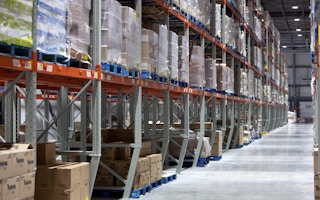A few weeks ago, the Gartner Supply Chain Executive Conference, attended by more than 2,000 supply chain professionals, was buzzing with stories of companies that are digitally transforming their supply chains: augmented reality head-mounted devices in factories, machines making decisions to approve suppliers, Internet of Things buttons reducing inventory, and artificial intelligence enhancing supply chain planning.
Sustainability was mentioned. The methodology for Gartner’s Supply Chain Top 25 companies now incorporates CSR performance as 10 per cent of the overall score. Featured panellists occasionally called out the environmental benefits of a new programme. Some digital platforms came with claims of addressing a degree of sustainability risk.
All of which is to say, sustainability was a secondary consideration.
Which invites the question: How can we elevate it to a primary position?
“
The new mandate for supply chain sustainability is to use this time of transition to embed sustainability firmly into the information, functionality, and end-use of digital technologies as they come into the mainstream.
This challenge is not limited to Gartner’s conference. Even as digital technologies are being applied to all aspects of supply chain management, sustainability is often still run on a parallel, Excel-based system or on a dedicated sustainability platform unconnected to other platforms. We aren’t digitalising supply chain sustainability, and we should be.
The reality of supply chain digitalisation today
First we must understand that digital transformations are far from guaranteed. A recent Salesforce article estimates that digital transformation projects have an 84 per cent chance of failure.
We must also be able to differentiate hype from reality. There has been a lot of recent optimism about blockchain, a decentralised database that keeps records of digital transactions. Blockchain is a technology with great potential, but there is a limited number of use cases for the supply chain today, and most experts agree that it is still years away from becoming mainstream.
We should also keep in mind that supply chains are not monolithic, and they cannot be managed as such. Some areas may digitalise faster—either because the benefits of going digital are more tangible, or because the right technology becomes available and cost-effective more quickly—while others may not keep pace.
The new mandate
The new mandate for supply chain sustainability is to use this time of transition to embed sustainability firmly into the information, functionality, and end-use of digital technologies as they come into the mainstream. Sustainable supply chain practitioners are primely placed to help companies navigate their digital supply chain transformation. We are not strangers to applying technology in difficult circumstances. For years, we have been using limited technology tools to onboard unwilling traders and agents to share sustainability data, and adapting data capture tools to collect information from farms, plantations, and mines way upstream, where technology access has been limited.
We must apply this skillset now. There is a lot to do: Digitise sustainability indicators, harness digital tools to see further into opaque supply chains, make sustainability systems interoperable, apply machine learning to identify sustainability risks, use augmented reality to enable better worker engagement, examine the social and environmental impacts of these new technologies, and much more.
By increasing our digital sophistication, sustainable supply chain management can lead innovation during the digital transformation.
Tara Norton is Managing Director of BSR. This post is republished from the BSR blog.


















